This summer, my partner and I visited a number of train stations and zoomed through mountain ranges, hills and vales, watching tiny cows in grassy fields whiz by the windows of our train car. Our goal, you ask? To try out the Grand Train Tour of Switzerland, a new Swiss Travel System tourism product designed for busy travellers, promising rail as the best way to discover Switzerland. Here are some tidbits from part 1 of our 2-part Swiss rail travel diaries.

Beautiful Basel along the Rhine
We arrived in Basel, a beautiful city cradled by the Rhine that shares a number of European borders. Here’s a cool fact: Basel is Switzerland’s only multi-bordered city that shares both train station and airport with France. Our first Basel surprise: having to constantly jump, not from train to train, but from German to French. This type of linguistic juggling is commonplace for Basel residents who typically speak four or five languages, as if it were nothing.
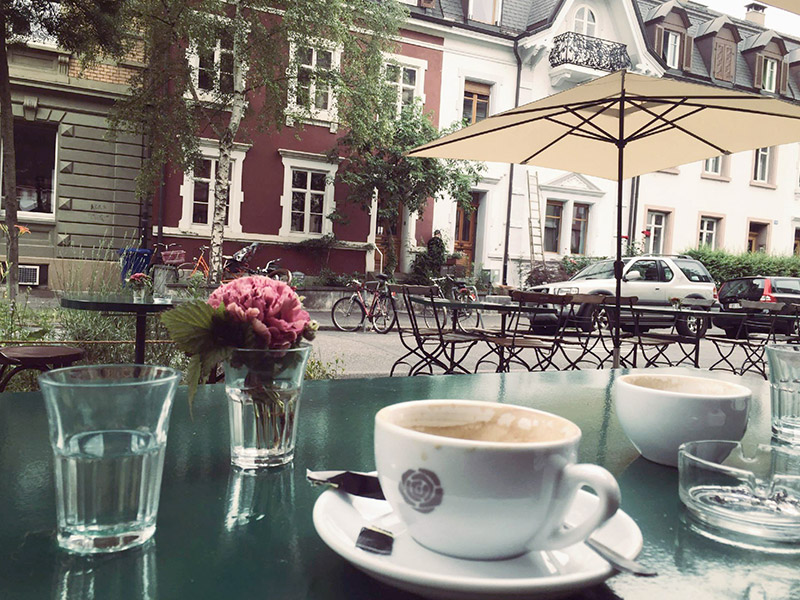
The next day, we headed off on foot from Basel’s city centre to wander in Germany, and to our pleasant surprise, without passing through customs! For us North Americans, it was really something to make an impromptu border crossing without having to show ID.
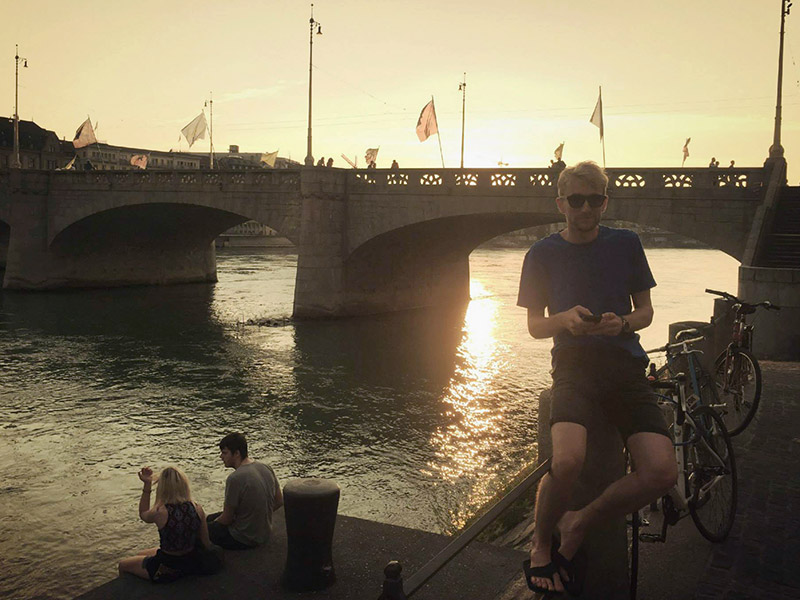
Basel, the first leg of our Swiss tour, appears peacefully wedged among three countries–Switzerland, France and Germany–without being forced to choose one identity over the other. Even if there are $30,000 watches sparkling in store windows, it’s the wealth of languages and culture that first blinds visitors with its “bling”, like an old Europe glimmer of hearts and voices. With more than 40 museums sprinkled across an area the size of a handkerchief, Basel reigns as the region’s cultural capital.

Besides hitting the summer art shows, the residents of Basel will push you to take a dip in the Rhine, a local sport consisting of letting oneself drift downstream along a marked course. Floating bags dubbed “Wickelfisch” were designed especially for this by Tilo Ahmels, who, funnily enough became our temporary next door neighbor!
Before you jump in the Rhine, you stuff the Wickelfisch with your clothes, phones, laptops, sealing it up tight with seven folds. Voila! The fish-bag becomes your own personal buoy! A typical product of Swiss ingenuity (and a very practical souvenir).

Swimming in the Rhine is a fun and invigorating activity if you’re in a group and forewarned of dangers, but otherwise avoid it. The current can be strong and carry debris or obstacles, so it’s best to prudently decline, especially if you’re not a strong swimmer. Another good reason to purchase travel insurance before leaving, even if you’re only going to Switzerland.
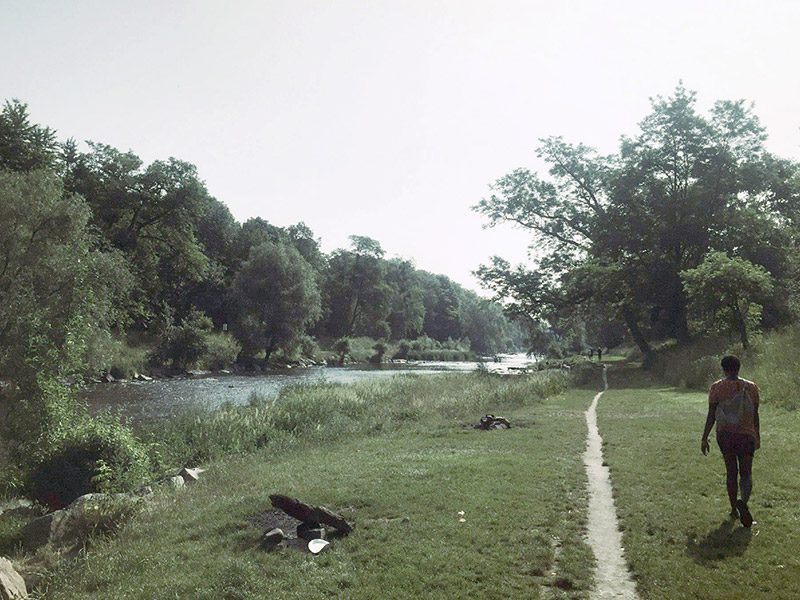
Basel was an ideal start to ‘test the waters’ of Switzerland (and take it from a Swiss native: water is truly at the heart of discovering the country), but we were ready to begin our train tour. We laced up our ‘seven-league boots’, so to speak, and boarded the Grand Rail tour of Switzerland headed for Lugano in the Italian-speaking canton of Ticino, our final destination of choice.
From Schaffhausen to St. Gallen
Several hours by train later, as we headed up the Rhine, we stopped in the town of Schaffhausen, in the canton of the same name.
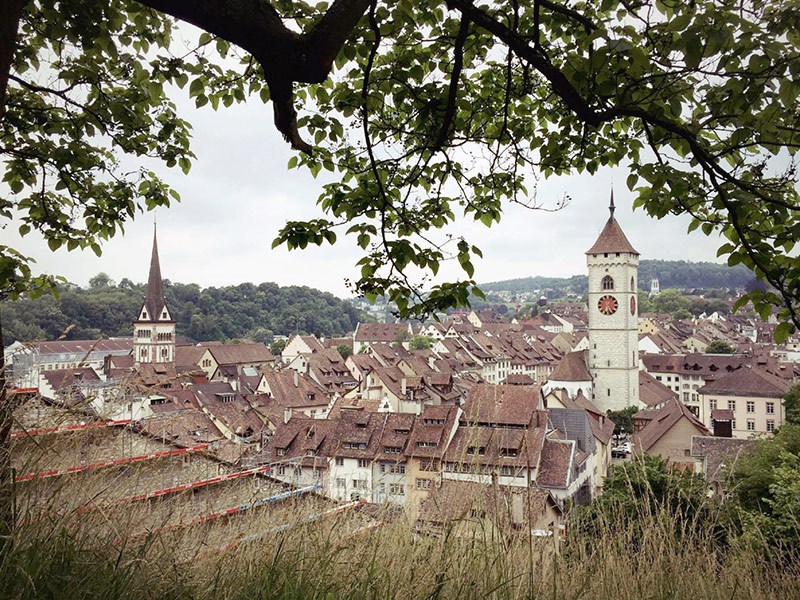
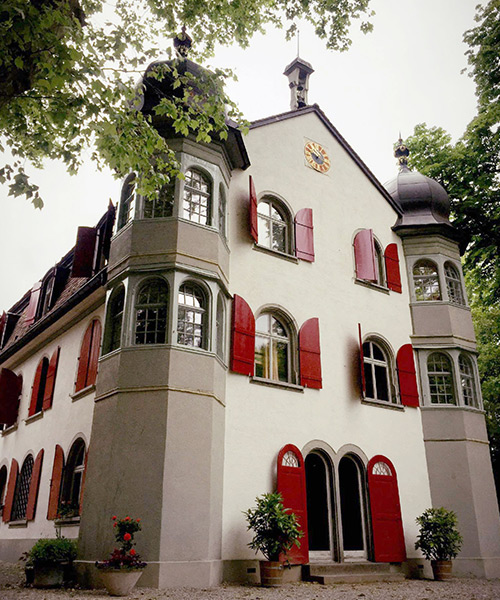
The old city of Schaffhausen is considered one of the most picturesque in Switzerland thanks to 171 painted houses and corbelled windows. You really take a trip back in time when you visit the circular Munot Fortress, an imposing guardian of the old town since the 16th century.
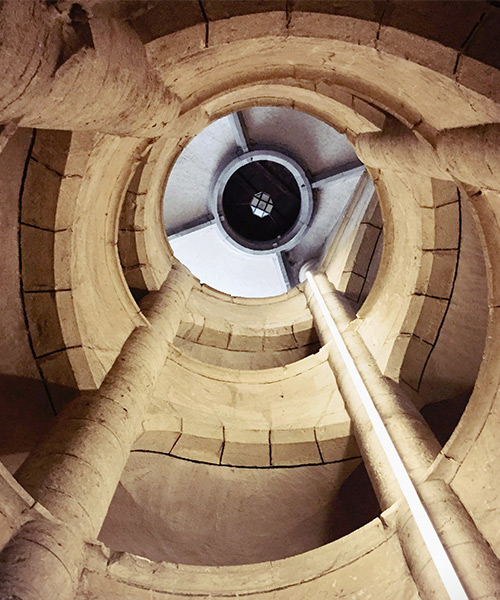
We were lucky to meet a young local who took us on a personal tour of the fortress, just as the sun started to set. He was absorbed in a video game, but eager to show us around and show off his historical knowledge. Without stopping for a second on his smartphone, he led us through secret passages, hideaways and even showed us a personal secret: a shortcut of his own invention that led us straight to our youth hostel.
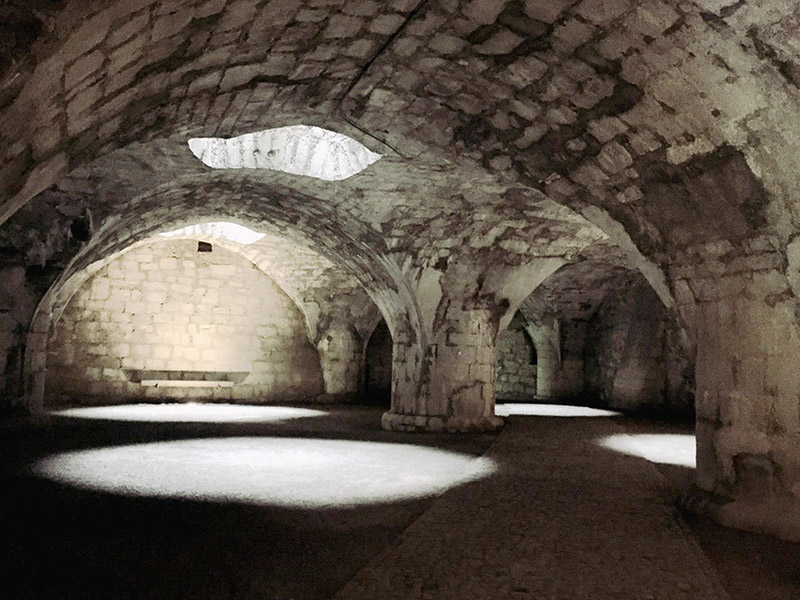
The next day, before continuing our train ride, we couldn’t pass up a chance to see the famous Rhine Falls, only briefly glimpsed from our train window just before arriving in Schaffhausen. We headed back to the falls, in the company of a woman we met at breakfast. What a magnificent, natural circus: it was worth the u-turn!

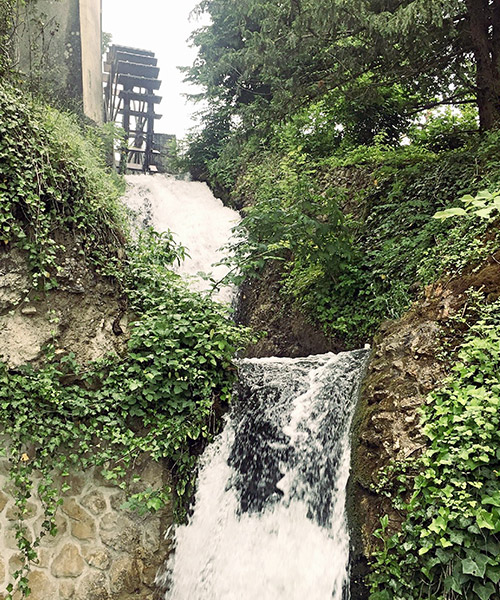

When the train arrived in St. Gallen (also called St. Gall), we decided to drop in for a whirlwind visit of St. Gall’s Abbey library. A UNESCO world heritage site, the library served as a backdrop for the film The Name of the Rose. We were literally breathless from the library’s sumptuous beauty.


We first wandered aimlessly in the old city of St. Gallen, drinking in the ornate facades until our thirst was quenched. We held our breath when we entered the library’s temple of knowledge. The only sound was the shuffle of our feet in the mandatory, oversized slippers they ask tourists to wear to dampen noise and preserve the solemn spirit of the place.
Forget about borrowing a book in these conditions! We returned to our train in silence, empty-handed, and headed to Lucerne.
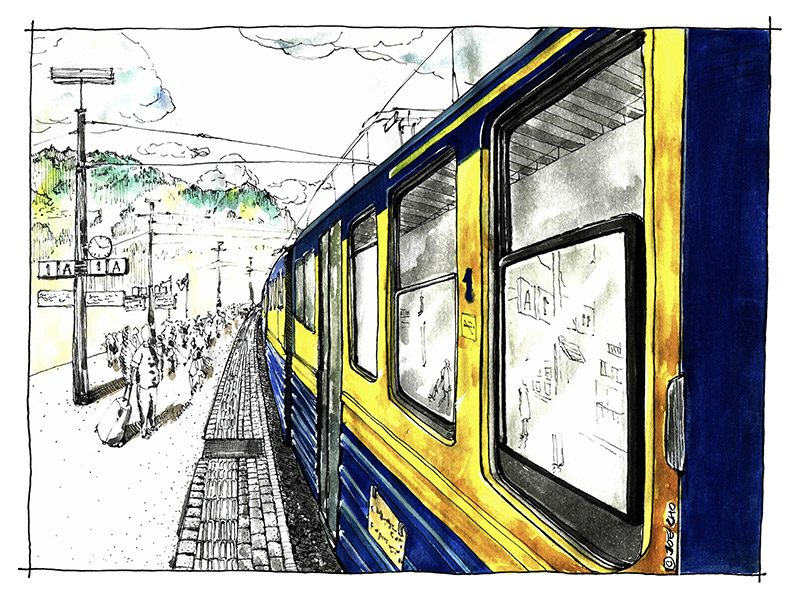
If you love trains and Europe, read TuGo’s tips for Eurail travel. Remember, for any trip to Europe, (but especially for longer trips), don’t forget to pack travel insurance! You never know what could happen. Take it from Alisha who was glad she had travel insurance when she injured her back on her Euro tour.
Don’t miss part two of our Grand Train Tour of Switzerland, coming soon! All aboard for Lucerne, Mount Rigi, the Eiger, Chillon Castle, Sion (Sitten) and Canton Ticino!
Happy travels,
Gary

 |
